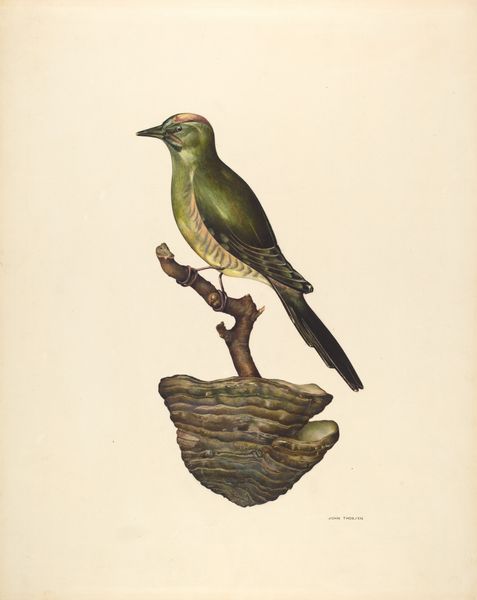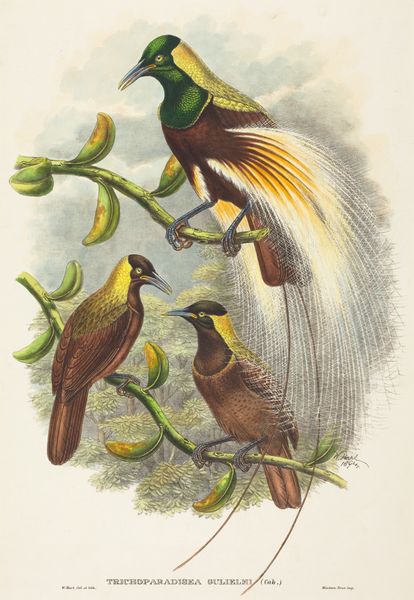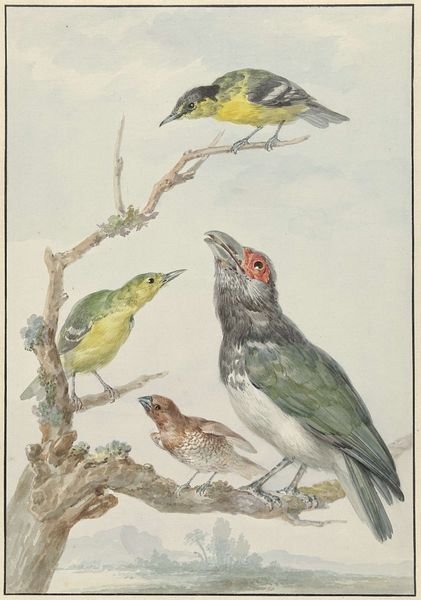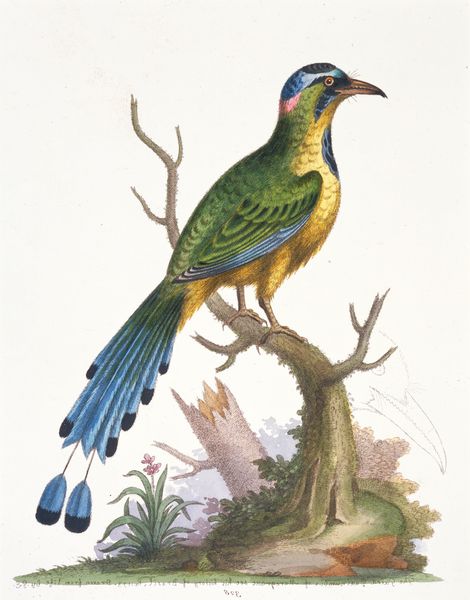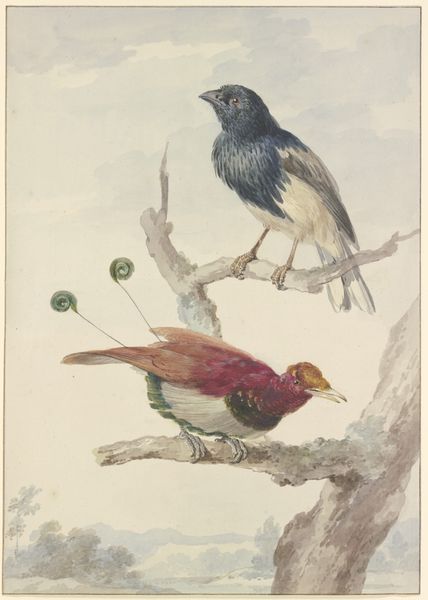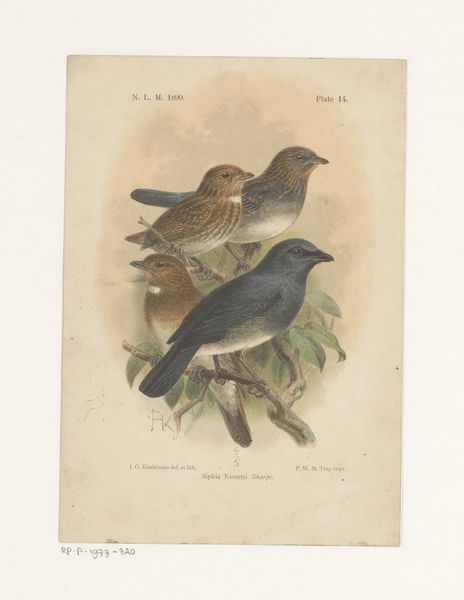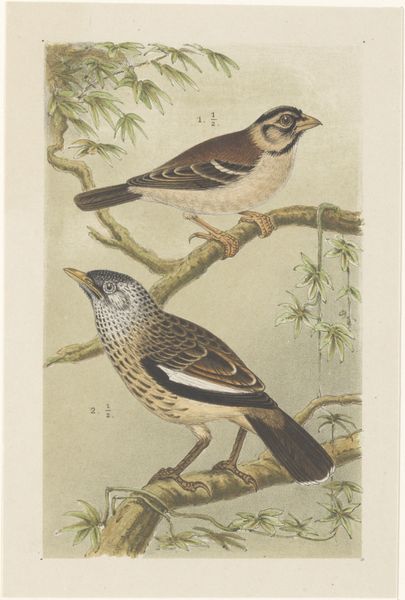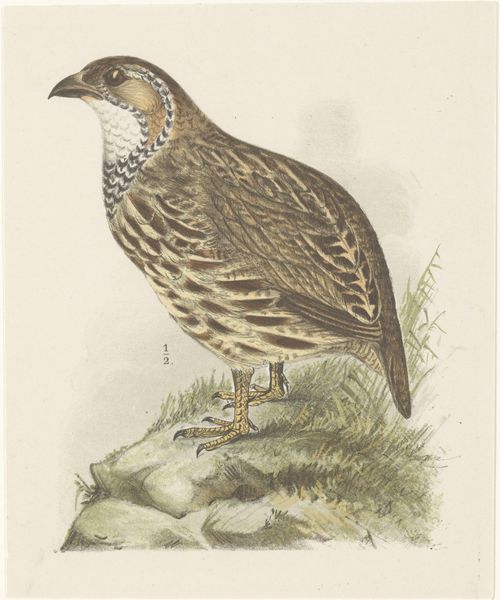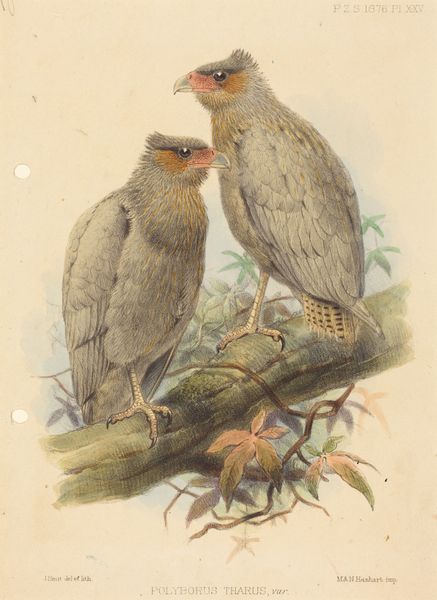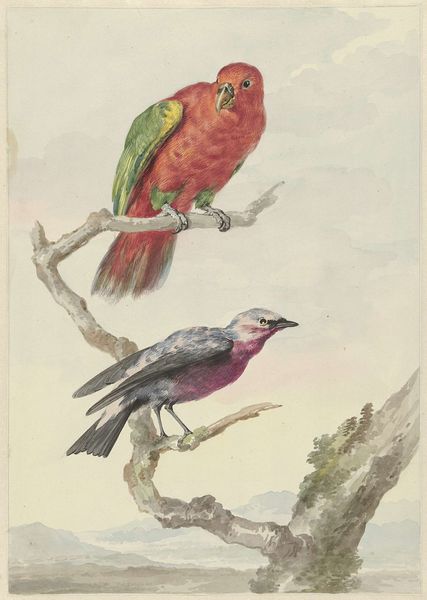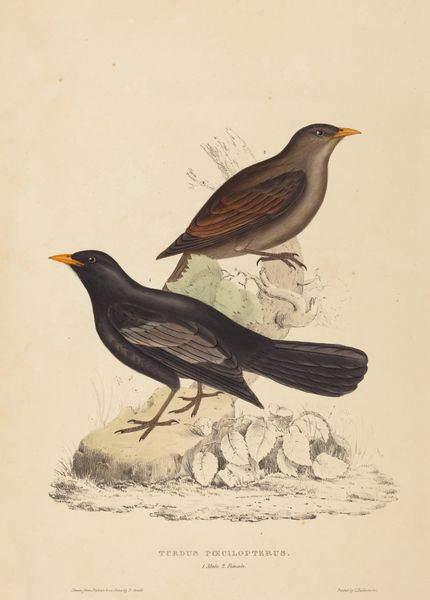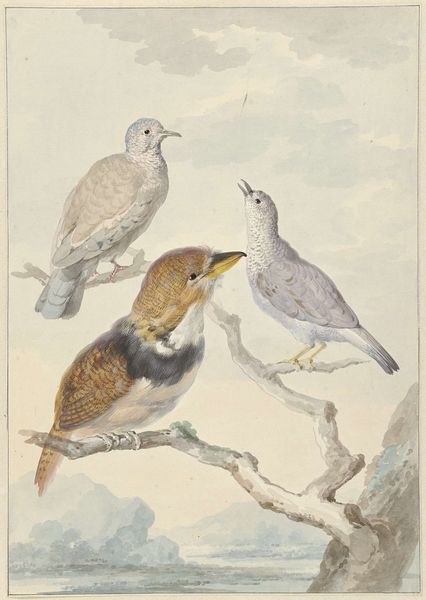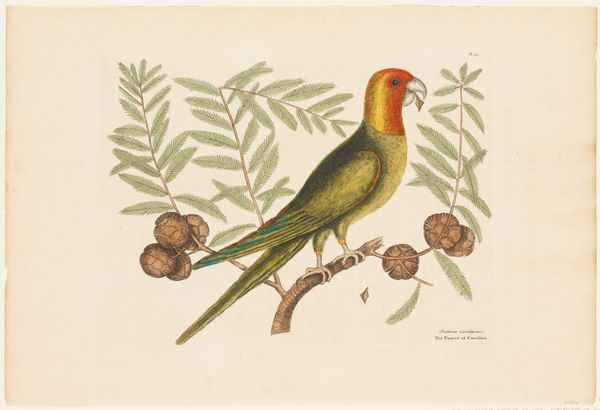
drawing, coloured-pencil, print, watercolor
#
portrait
#
drawing
#
coloured-pencil
# print
#
watercolor
#
coloured pencil
#
watercolour illustration
#
naturalism
#
botanical art
Copyright: National Gallery of Art: CC0 1.0
Curator: Here we have "Two Birds (Ptilonopus Auranthfrons)," attributed to Joseph Wolf. It’s rendered in a combination of watercolor and colored pencil, and presented as a print. Editor: It's striking how these two birds seem posed. There’s an attentiveness suggested through the rendering of their eyes that makes it a really engaging work. Curator: Agreed. What’s compelling is how Wolf uses this scientific approach to portray what are clearly living, breathing creatures. Consider the conditions under which this print would have been consumed, most likely in Europe where the average person would have had zero real exposure to these bird specimens from afar. Editor: The texture achieved through the combination of watercolor washes and colored pencil is especially captivating. Look at how the light catches the bird's feathers—there’s a palpable sense of depth and dimension that transcends a simple representational study. Curator: Absolutely. It points to the commodification of the natural world that defined much of the 19th century and beyond. Think of the industrial revolution churning out advancements and products that enabled the pursuit of the scientific and specimen illustrations as art objects and trade items. This piece acts almost as a portrait, bringing in high art practice into the realm of natural illustration and commercial practice. Editor: The piece exists on the verge of photorealism, it is beautiful and impressive in its detail. Note also, how the two birds differ in position: one stands tall and looks noble, and the other seems huddled down, a different state of being presented here, both equally fascinating and detailed. Curator: These naturalistic prints also facilitated further environmental impact. The mass circulation of these images creates consumer demand that needs to be satiated, feeding back into extractive industry that destroys environment, driving new species discovery while simultaneously exacerbating damage. Editor: The composition itself invites contemplation, don’t you think? There’s balance in color, texture and form. These components work in harmony while portraying a detailed, yet stylized look at nature. Curator: It is indeed an example of how a specific style can also reflect global-scale social and ecological patterns. It shows us the process of how labor, science, art, and environmental degradation were bound together through simple visual media. Editor: The balance of scientific detail with artistic license makes this work so engaging and provides multiple modes of interpreting nature's wonder.
Comments
No comments
Be the first to comment and join the conversation on the ultimate creative platform.
